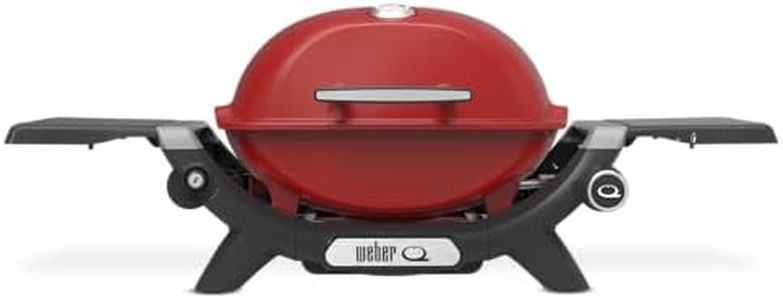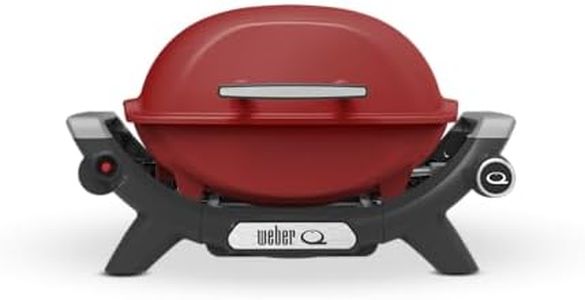We Use CookiesWe use cookies to enhance the security, performance,
functionality and for analytical and promotional activities. By continuing to browse this site you
are agreeing to our privacy policy
5 Best Gas Grills Under 500
From leading brands and best sellers available on the web.Buying Guide for the Best Gas Grills Under 500
When shopping for a gas grill under $500, it's important to find the right balance between performance, durability, and features that suit your cooking habits. Take time to think about how often you grill, how many people you usually cook for, and what kinds of foods you love to prepare. Comparing models based on their key specs can help you focus on what's most important for you instead of getting distracted by extras you might not need.Cooking AreaThe cooking area refers to the size of the main surface where you place your food. This spec is important because it determines how much food you can grill at once. Smaller grills usually have around 200–300 square inches, which is good for singles or couples. Medium-sized grills with 400–500 square inches suit most families and small gatherings. If you often have parties or large meals, look for something above 500 square inches. Consider how many people you usually cook for to guide you towards the right size—bigger isn't always better if you seldom cook for a crowd.
Number of BurnersThe number of burners tells you how many separate heat zones you have. This matters for being able to cook different foods at different temperatures at the same time, or for indirect cooking (like roasting). Two burners are enough for basic grilling and small meals. Three or four burners give more flexibility and control, making them better for families or anyone who likes to experiment with different cooking styles. If you only grill occasionally or for a few people, fewer burners are fine, but if you want to grow as a griller, more burners offer more options.
BTU RatingBTU stands for British Thermal Unit and is a measure of the grill’s heat output. While more BTUs can mean more heat, what matters more is how evenly and efficiently that heat is distributed. For a typical grill under $500, you'll see totals between 20,000 and 40,000 BTUs. Lower BTUs can be fine for smaller grills; larger grills may need more to heat up evenly. Base your decision on the size of the grill—don’t just chase high numbers.
Build MaterialThe material of the grill affects its durability, heat retention, and ease of cleaning. Common materials are stainless steel, cast iron, and coated steel. Stainless steel is most resistant to rust and weather, making it long-lasting and easy to clean. Coated steel (usually powder-coated or enameled) is budget-friendly but can chip or rust over time. Cast iron grates hold heat well and make great sear marks but require maintenance to prevent rust. If you want a grill to last and need low maintenance, seek better materials—even under $500, good choices are available.
Ignition SystemThe ignition system is how you light the grill. Features range from simple push-button spark igniters to more advanced electronic or battery-powered systems. Reliable ignition is important for convenience and safety, so choose a grill with a reputation for easy, consistent starting. If you want to avoid frustration, prioritize models with proven, user-friendly ignition systems.
Side Shelves and StorageSide shelves and storage options add convenience, giving you space for prep work, tools, or ingredients. Some basic grills may lack these features or only include small shelves, while others have folding or removable shelves, tool hooks, and enclosed cabinets. Think about your outdoor cooking space and whether you need extra room for plates, seasonings, or utensils. If you often juggle many items at your grill, extra shelves and storage are really helpful.
Portability/SizePortability relates to whether you’ll move your grill around, need to store it away, or want to take it camping or tailgating. Some grills are heavy and stationary, while others have wheels or are designed to be compact. If your space is limited or you want to grill in different locations, look for lightweight models or ones with sturdy wheels.
WarrantyThe warranty tells you how much the manufacturer stands behind their product. A longer warranty can mean better support if something goes wrong, especially on key parts like burners or grates. Warranties on grills under $500 will vary from one to several years. If you want peace of mind, check that the parts most likely to wear out are covered adequately.




